| Revision as of 07:49, 13 January 2006 editLambiam (talk | contribs)Autopatrolled, Extended confirmed users, Page movers63,646 editsm →The split with Mondrian: punctuation← Previous edit | Latest revision as of 14:50, 4 January 2025 edit undoEgrabczewski (talk | contribs)Extended confirmed users8,378 editsm →Works and publications: arranged publications | ||
| (419 intermediate revisions by more than 100 users not shown) | |||
| Line 1: | Line 1: | ||
| {{Short description|Dutch artist (1883–1931)}} | |||
| ] | |||
| {{Use dmy dates|date=September 2019}} | |||
| '''Theo van Doesburg''' (], ], ] – ], ], ]) was a ] artist, practicing in ], ], ] and ]. He is most famously known as the founder and leader of ]. | |||
| {{Infobox artist | |||
| | bgcolour = | |||
| | name = Theo van Doesburg | |||
| | other names = I.K. Bonset, Aldo Camini, "Does" | |||
| | image = Theo van Doesburg in military service.JPG | |||
| | imagesize = | |||
| | caption = Theo van Doesburg as Sergeant Küpper, c. 1915 | |||
| | birth_name = Christian Emil Marie Küpper | |||
| | birth_date = {{birth date|df=y|1883|8|30}} | |||
| | birth_place = ], Netherlands | |||
| | death_date = {{death date and age|df=y|1931|3|7|1883|8|30}} | |||
| | death_place = ], Switzerland | |||
| | field = Painting, architecture, poetry | |||
| | training = | |||
| | movement = ], ], ], ] | |||
| | works = | |||
| | patrons = | |||
| | influenced by = | |||
| | influenced = | |||
| | awards = | |||
| }} | |||
| '''Theo van Doesburg''' ({{IPA|nl|ˈteːjoː vɑn ˈduzbʏr(ə)x|lang}}; 30 August 1883 – 7 March 1931) was a Dutch artist, who practiced painting, writing, poetry and architecture. He is best known as the founder and leader of ].<ref name="tate">{{cite web |url=http://www.tate.org.uk/learn/online-resources/glossary/d/de-stijl |title=De Stijl |access-date=31 July 2006 |work=Tate Glossary |publisher=The Tate}}</ref><ref name="archdic">{{cite book |last=Curl |first=James Stevens |title=A Dictionary of Architecture and Landscape Architecture |url=https://archive.org/details/dictionaryofarch00curl_0 |url-access=registration |year=2006 |edition=Second |publisher=Oxford University Press |isbn=0-19-860678-8}}</ref> He married three times.<ref name="Does-Baljeu">{{cite book |last=Baljeu|first=Joost |title=Theo Van Doesburg |url=https://archive.org/details/theovandoesburg0000balj/page/14/mode/2up |year=1974 |publisher=Studio Vista}}</ref> | |||
| == |
== Personal life == | ||
| Theo van Doesburg was born '''Christian Emil Marie Küpper''' on 30 August 1883, in ], Netherlands, as the son of the photographer Wilhelm Küpper and Henrietta Catherina Margadant. After a short period of training in acting and singing, he decided to become a storekeeper. He always regarded his stepfather, Theodorus Doesburg, to be his natural father, so that his first works are signed with Theo Doesburg, to which he later added "van". | |||
| ===Early life=== | |||
| Theo van Doesburg was born as '''Christiaan Emil Marie Küpper''' on August 30 1883 in ] as the son of the ] ] and ]. Early in his twenties he started using the name of his stepfather ] to sign his early paintings. He supported his works by copying paintings from the ] and writing for magazines. | |||
| Van Doesburg married three times: on 4 May 1910 to theosophist, poet and writer ]; on 30 May 1917 to accountant ]; and on 24 November 1928 to artist, pianist and choreographer ].<ref name="Does-Baljeu"/><ref>{{cite web |last1=van Doesburg |first1=Nelly |title=Avant-Garde Art |url=https://www.ltmrecordings.com/repertoire_de_stijl_bauhaus_dada_ltmcd2495.html |website=LTM Recordings |access-date=4 July 2024}}</ref> | |||
| ===Founding of 'De Stijl'=== | |||
| It was while reviewing an exposition for one of these magazines, in ], that he came in contact with the works of ], who was eight years older than him, and had then already gained some attention with his paintings. Van Doesburg saw in these paintings his ideal in painting: a complete abstraction of reality. Soon after the exposition Van Doesburg got in contact with Mondrian, and together with other similar-minded artists such as ], ], ] and ] they founded the magazine ] in ]. | |||
| == Career == | |||
| ===Van Doesburg promoting 'De Stijl'=== | |||
| ] | |||
| Although 'De Stijl' was made up of many members Van Doesburg was the 'ambassador' of the movement, promoting it across Europe. He moved to ] in 1922, deciding to make an impression on the ] principal, ], in order to spread the influence of the movement. | |||
| ], Utrecht]] | |||
| His first exhibition was in 1908. From 1912 onwards, he supported his works by writing for magazines. He considered himself to be a modern painter, at that time, although his early work is in line with the Amsterdam Impressionists and is influenced by ], both in style and subject matter. This suddenly changed in 1913 after reading ]'s ''Rückblicke'',<ref>{{cite web |last1=Kandinsky |first1=Wassily |title=Kandinsly - Complete Writings on Art: Reminiscences |url=https://archive.org/details/kandinskycomplet0000kand/page/354/mode/2up |website=Internet Archive |publisher=G. K. Hall & Co. |access-date=5 July 2024}}</ref> in which he looks back at his life as a painter from 1903 to 1913. It made him realize there was a higher, more spiritual level in painting that originates from the mind rather than from everyday life, and that abstraction is the only logical outcome of this. It was already in 1912 that Van Doesburg was criticizing Futurism in an art article in ''Eenheid'' no. 127, on 9 November 1912, because "The mimetic expression of velocity (whatever its form may be: the aeroplane, the automobile, and so on) is diametrically opposed to the character of painting, the supreme origin of which is to be found in inner life". On 6 November 1915, he wrote in the same journal: "Mondrian realizes the importance of line. The line has almost become a work of art in itself; one can not play with it when the representation of objects perceived was all-important. The white canvas is almost solemn. Each superfluous line, each wrongly placed line, any color placed without veneration or care, can spoil everything—that is, the spiritual".<ref>{{Cite web | |||
| | last = Doig | |||
| | first = Allan | |||
| | title = Theo van Doesburg (Christian Emil Marie Küpper) | |||
| | work = MoMA – The Collection | |||
| | publisher = ] | |||
| | year = 2009 | |||
| | url = http://www.moma.org/collection/artist.php?artist_id=6076 | |||
| | access-date = 4 February 2011 }} | |||
| </ref> | |||
| == The De Stijl movement == | |||
| Although Gropius accepted a turn towards ] in 1923, he did not feel that Doesburg could become a Bauhaus master. Doesburg then installed himself near to the Bauhaus buildings and started to attract school students interested in the new ideas of constructivism. | |||
| It was while reviewing an exhibition for one of these magazines he wrote for, in 1915 (halfway through his two-year service in the army), that he came in contact with the works of ], who was eight years older than he was, and had by then already gained some attention with his paintings. Van Doesburg saw in these paintings his ideal in painting: a complete abstraction of reality. Soon after the exhibition Van Doesburg got in contact with Mondrian, and together with related artists ], ], ] and ] they founded the magazine '']'' in 1917.<ref>{{Cite web| title =De Stijl| work =Guggenheim Glossary| publisher =]| url =http://www.guggenheimcollection.org/site/glossary_De_Stijl.html| access-date =4 February 2011| url-status =dead| archive-url =https://web.archive.org/web/20080821042905/http://www.guggenheimcollection.org/site/glossary_De_Stijl.html| archive-date =21 August 2008| df =dmy-all}} | |||
| ===The split with Mondrian=== | |||
| </ref> | |||
| ] | |||
| {{wide image|Stijl130.jpg|1200px|''Principal contributors to De Stijl 1917–1927''}} | |||
| The friendship between Van Doesburg and Mondrian remained strong in these years, although their primary way of communication was by | |||
| letter. In ] Van Doesburg moved to ] together with his wife ]. Because the two men got to see each other on a much more regular basis the differences in character became apparent: Mondrian was ], while van Doesburg was more flamboyant and ]. During 1924 the two men had disagreements, which eventually lead to a (temporary) split in the same year. The exact reason of this split has been a point among art historians; usually the divergent ideas about the directions of the lines in the paintings have been named as the primary reason: Mondrian never accepted diagonals, whereas Doesburg insisted on the diagonal's dynamic aspects, and indeed featured it in many of his works. However, Mondrian accepted some concepts of diagonals, such as in his "Lozenge" paintings, where the canvas was rotated 45 degrees, while still maintaining horizontal lines. In recent years, however, this theory gained critique from art historians such as ], who cites their different concepts about space and time as the main reason for the split. After the split Van Doesburg launched a new concept for his art: ], which was characterized by the diagonal lines and rivalled with Mondrians ]. | |||
| === Promoting De Stijl === | |||
| In ] the two men became reconciled when they accidentally met in a café in Paris. | |||
| ], May 1922]] | |||
| Although De Stijl was made up of many members, Van Doesburg was the "ambassador" of the movement, promoting it across Europe. He moved to ] in 1922, deciding to make an impression on the ] principal, ], to spread the influence of the movement. | |||
| While Gropius accepted many of the precepts of contemporary art movements he did not feel that Doesburg should become a Bauhaus master. Doesburg then installed himself near to the Bauhaus buildings and started to attract school students interested in the new ideas of ], ], and ].<ref>{{Cite book | |||
| ===Activities other than painting=== | |||
| | author1= Magdalena Droste | |||
| Van Doesburg had other activities apart from painting and promoting De Stijl: he made efforts in ], designing houses for artists, together with ] and he designed the decoration for the Café Aubette in ]. Van Doesburg also kept a link with ], publishing the magazine ''DADA Holland'' under the false name of ]. He also published Dada ] under the same name in De Stijl. Together with ] and ], Van Doesburg pioneered the efforts to an International of Arts in two congresses held in ] and Weimar, in 1922. | |||
| | author2= Bauhaus-Archive | |||
| | author-link2=Bauhaus Archive | |||
| | title = The Bauhaus, 1919–1933 | |||
| | publisher = ] | |||
| | date = 1 November 2002 | |||
| | page = | |||
| | isbn = 3-8228-2105-5 }} | |||
| </ref> | |||
| == The split with Mondrian == | |||
| ===Last years=== | |||
| ] | |||
| Van Doesburg stayed active in art groups such as ], ] and ], which he founded in ]. | |||
| At the end of February 1931 he was forced to move to ] in ] because of his declining health. Van Doesburg did not recuperate: on ] ] he died of a ]. | |||
| After his death Nelly van Doesburg released the last issue of De Stijl as a memorial issue with contributions by old and new members from De Stijl. | |||
| The friendship between Van Doesburg and Mondrian remained strong in these years, although their primary means of communication was by letter. In 1923 Van Doesburg moved to Paris, together with his later wife ]. Because the two men got to see each other on a much more regular basis the differences in character became apparent: Mondrian was an ], while van Doesburg was more flamboyant and extravagant. During 1924 the two men had disagreements, which eventually led to a temporary split that year. The exact reason for the split has been a point of contention among art historians; usually the divergent ideas about the directions of the lines in the paintings have been named as the primary reason: Mondrian never accepted diagonals, whereas Doesburg insisted on the dynamic aspects of the diagonal, and indeed featured it in his art. Mondrian accepted some concepts of diagonals, such as in his "Lozenge" paintings, where the canvas was rotated 45 degrees, while still maintaining horizontal lines. In recent years, however, this theory has been challenged by art historians such as ], who cites the artist's different concepts about space and time. After the split, Van Doesburg launched a new concept for his art, ],<ref>{{cite book|title=Design of the 20th Century|first1=Charlotte|last1=Fiell|first2=Peter|last2=Fiell|publisher=Taschen|location=Köln|edition=25th anniversary|year=2005|page=706|isbn=9783822840788|oclc=809539744}}</ref> which was characterized by the diagonal lines and which rivaled Mondrian's ]. | |||
| ==Literature== | |||
| * Baljeu, Joost: Theo van Doesburg (London: Studio Vista, 1974) | |||
| * Overy, Paul. De Stijl (London: Studio Vista, 1969) | |||
| * White, Michael: De Stijl and Dutch modernism (Manchester : Manchester University Press, 2003) | |||
| In 1929 the two men reconciled when they accidentally met in a café in Paris.<ref>{{Cite news | |||
| ] | |||
| | last = Mawer | |||
| ] | |||
| | first = Simon | |||
| ] | |||
| | title = Theo van Doesburg: Forgotten artist of the avant garde | |||
| ] | |||
| | newspaper = ] | |||
| ] | |||
| | date = 23 January 2010 | |||
| ] | |||
| | url = https://www.theguardian.com/artanddesign/2010/jan/23/theo-van-doesburg-avant-garde-tate | |||
| | access-date = 4 February 2011 }} | |||
| </ref> | |||
| == Architecture, design, and typography == | |||
| ] | |||
| ].]] | |||
| ] | |||
| ] | |||
| ] | |||
| ] | |||
| Van Doesburg had other activities apart from painting and promoting De Stijl: he made efforts in architecture, designing houses for artists, together with ] and ] he designed the decoration for the ] entertainment complex in ]. Together with ] and ], Van Doesburg pioneered the efforts to an International of Arts in two congresses held in ] and Weimar, in 1922. A geometrically constructed alphabet Van Doesburg designed in 1919 has been revived in digital form as ]. This typeface anticipates similar later experimentation by ] in his typeface ]. In the mid-1920s, Van Doesburg worked together with Schwitters and the artist ] to produce a series of children's fairy-tale books that featured unusual typography, including ''Hahnepeter'' (''Peter the Rooster'', 1924), ''Die Märchen vom Paradies'' (''The Fairy Tales of Paradise'', 1924–25), and ''Die Scheuche'' (''The Scarecrow'', 1925).<ref name="Schwitters2009">{{cite book|author1=Kurt Schwitters|author2=Irvine Peacock|author3=Jack Zipes|title=Lucky Hans and Other Merz Fairy Tales|url=https://books.google.com/books?id=WK3uOB5q-gIC&pg=PA15|access-date=6 September 2013|year=2009|publisher=Princeton University Press|isbn=978-0-691-13967-8|pages=14–15}}</ref> | |||
| ] | |||
| ] | |||
| Van Doesburg also kept a link with ], publishing the magazine ''Mécano'' under the ] of I. K. Bonset (possibly derived from "Ik ben zot", Dutch for "I am foolish"). He also published Dada poetry under the same name in De Stijl. Under a second pseudonym, Aldo Camini, he published anti-philosophical prose, inspired by the Italian representative of ], ]. In these works of literature, he heavily opposed ] (and thus against the movement of the ], ], and ] thinking). He sought for a collective experience of reality. His conception of intensity had much in common with ]'s conception of ''dynamiek''. He wanted to strip words of their former meaning, and give them a new meaning and power of expression. By doing this, he tried to ''evoke'' a new reality, instead of describing it. | |||
| == Last years == | |||
| Van Doesburg stayed active in art groups and the magazine '']'', which he left in 1929. "The plan to produce a magazine had been broached some time before. It is clear from the correspondence that in the spring of 1928 Van Doesburg made the first designs for the layout of the periodical. He wrote to ] on 28 May 1929 : I will prepare the blueprint fo nouveau plan."<ref>{{Cite book|title = The antagonistic link; Joaquín Torres-García Theo van Doesburg|last = Lipschutz-Villa|first = Eduardo|publisher = Institute of Contemporary Art/Amsterdam|year = 1991|isbn = 9080096814|location = Amsterdam}}</ref> ], which he co-founded in 1929, and ], which he co-founded in 1931.<ref>{{Cite web | |||
| | title = Gruppe Abstraction-Création | |||
| | work = Dictionary | |||
| | publisher = Ketterer Kunst | |||
| | url = http://www.kettererkunst.com/dict/gruppe-abstraction-creation.shtml | |||
| | access-date = 4 February 2011 }} | |||
| </ref> At the end of February 1931 he was forced to move to ] in Switzerland because of his declining health. Van Doesburg did not recuperate: on 7 March 1931, he died of a heart attack. After his death Nelly van Doesburg released the last issue of De Stijl in January 1932, as a memorial issue, with contributions by old and new members from De Stijl. | |||
| == Influence == | |||
| Van Doesburg's work has had significant influence, including that dealing with issues of crossover art, design and architecture. For example, his ''Space-time construction #3'' (1923) was a key work in the ]'s ''Painting toward architecture'' exhibition (1947–52, 28 venues).<ref>Preece, R. J. (18 June 2018). . ''artdesigncafe''. Retrieved 24 March 2019.</ref> From that time, the work was influential to the practice of noted architect ]. In 1992, he acquired the artwork, which was donated to the ] in Canberra in 2010.<ref>Theo van Doesburg.. National Gallery of Australia, Canberra. Retrieved 24 March 2019.</ref> In a travelling, international exhibition on Seidler's work, Van Doesburg's ''Space time-construction #3'' was shown as a key influence.<ref>(c. 2014–15). . Sydney Living Museums website. Retrieved 24 March 2019.</ref> | |||
| == Works and publications == | |||
| === Publications === | |||
| * {{cite journal |last1=van Doesburg |first1=Theo |title=''Futurisme'' |trans-title=''Futurism'' |journal=Eenheid |date=9 November 1912 |volume=3 |issue=127 |pages=1-6 |url=https://archive.org/details/futurisme_202412/mode/2up |access-date=11 December 2024}} | |||
| * {{cite book |last=van Doesburg |first=Theo |title=The New Movement in Painting |trans-title=De nieuwe beweging in de schilderkunst|year=1916 |url=https://archive.org/details/the-new-movement-in-painting-doesburg-1916/mode/2up |publisher=De Beweging|volume=12|language=en, nl}} | |||
| * {{cite journal |last1=van Doesburg |first1=Theo |title=De Stijl |journal=De Stijl | date= 1917 |volume=1-8 (1917-1932) |url=http://sdrc.lib.uiowa.edu/dada/de_stijl/index.htm }} | |||
| * {{cite book |last=van Doesburg |first=Theo |title=Three Presentations On The New Visual Arts|trans-title=Drie voordrachten over de nieuwe beeldende kunst verscheen|year=1919 |url=https://archive.org/details/three-presentations-on-the-new-visual-arts-1919_202412 |publisher=Amsterdam|language=en}} | |||
| * {{cite journal |last1=van Doesburg |first1=Theo |title=''Fundamental Concepts of the New Visual Art'' |trans-title=''Grondbegrippen Der Nieuwe Beeldende Kunst'' |journal=Tijdschrift voor Wijsbegeerte |date=1919 |volume=13 |pages=30-49; 169-188 |url=https://archive.org/details/grondbegrippen-der-nieuwe-beeldende-kunst-theo-van-doesburg-1919-v.-1.0/mode/2up |access-date=28 August 2024}} | |||
| * {{cite journal |last1=van Doesburg |first1=Theo |title=''Anti-Tendenkunst'' |trans-title=''Anti-Tendencious Art'' |journal=De Stijl |date=April 1923 |volume=6 |issue=2 |pages=17-19|url=https://archive.org/details/anti-tendenzkunst-van-doesburg-1923-du-en/Anti-Tendency%20Art%20-%20Van%20Doesburg%20%281923%29%20DU-EN/mode/2up}} | |||
| * {{cite book |last=van Doesburg |first=Theo |title=''Principles Of Neo-plastic Art''|trans-title=''Grundbefriffe der neuen gestaltenden Kunst''|year=1925 |url=https://archive.org/details/principles-of-neo-plastic-art-van-doesburg-1968-v.-1.2 |publisher=Lars Müller|language=en}} | |||
| * {{cite journal |last1=van Doesburg |first1=Theo |title=Der Kampf um den Neuen Stil |trans-title=The Struggle for the New Style |journal=Neue Schweizer Rundschau |volume=1929 |date=1929 |issue=1,3,5,7,8 |url=https://archive.org/details/der-kampf-um-den-neuen-stil-theo-van-doesburg-1929}} | |||
| === Works === | |||
| <gallery widths="200px" heights="200px" perrow="4"> | |||
| <!-- File:Theo van Doesburg 032.jpg| --> | |||
| File:Woman in Landscape by Theo van Doesburg AB4045.jpg|''Woman in Landscape'' | |||
| Image:Theo van Doesburg Selfportrait with hat.jpg|''Self-portrait with hat'', 1906 | |||
| File:Self-portrait by Theo van Doesburg (1915).jpg|Self-portrait (1915) | |||
| File:Theo van Doesburg 166.jpg|''Composition'', 1915 | |||
| File:Theo van Doesburg Composition I.jpg|''Composition I'' | |||
| Image:Theo van Doesburg Composition VII (the three graces).jpg|]: ''Composition VII (the three graces)'', 1917 | |||
| File:Vandoesburg Counter composition XIII.jpg| ''Counter composition XIII'', 1929 | |||
| File:Theo van Doesburg - Card players - Google Art Project.jpg|'']'', 1916–1917 | |||
| File:Theo van Doesburg - Composition with window with coloured glass III.JPG|''Composition with window with coloured glass III'' | |||
| File:Theo van Doesburg Tree.jpg|''Tree'' | |||
| File:Theo van Doesburg - Geabstraheerd portret - AB4093 - Museum De Lakenhal.jpg|''Abstract portrait'' | |||
| File:Theo van Doesburg Mouvement héroïque.jpg|''Mouvement héroïque'' | |||
| File:Doesburg--Compositie-IX.jpg|'']'' | |||
| File:Theo van Doesburg 153.jpg|ceiling design for the Ciné-Dancing of the Aubette | |||
| </gallery> | |||
| == See also == | |||
| * ] | |||
| * ] | |||
| * ] | |||
| * ] | |||
| * ] | |||
| == References == | |||
| {{Reflist}} | |||
| ==Further reading== | |||
| * {{cite book|url=https://archive.org/details/theovandoesburg0000balj|title=Theo van Doesburg|first=Joost|last=Baljeu|location=London|publisher=Studio Vista|year=1974 |isbn=0-289-70358-1}} | |||
| * {{cite book|url=http://rkddb.rkd.nl/rkddb/inventar/Doesburg_Theo_en_Nelly_van.pdf|title=Theo van Doesburg Archive: ''Archive of Theo van Doesburg and his wives''|first=Bouwe|last=Hijma|location=The Hague|year=1991}} | |||
| * {{cite book|url=http://www.dbnl.org/tekst/jaff001stij01_01/jaff001stij01_01.pdf|title=De Stijl 1917–1931 – The Dutch Contribution to Modern Art|first=H.L.C.|last=Jaffé|publisher=J.M. Meulenhoff|location=Amsterdam|year=1956}} | |||
| * Hoek, Els; Blokhuis, Marleen; Goovaerts, Ingrid; Kamphuys, Natalie; et al. (2000). ''Theo van Doesburg: Oeuvre Catalogus''. Utrecht: ]. {{ISBN|90-6868-255-5}}. | |||
| * {{cite book |last1=Overy |first1=Paul |title=De Stijl |date=1969 |publisher=Studio Vista|url=https://archive.org/details/destijl0000unse/mode/2up|sbn=289-79622-9}} | |||
| *{{cite book |last=Overy |first=Paul |author-link=Paul Overy |date=1991 |title=De Stijl |location=London |publisher=] |url=https://archive.org/details/destijl0000over/mode/2up|isbn=0-500-20240-0}} | |||
| * White, Michael (2003). ''De Stijl and Dutch modernism''. Manchester University Press. {{ISBN|0-7190-6162-8}}. | |||
| * {{cite book |last1=Faassen |first1=Sjoerd |last2=Renders |first2=Hans |title=Ik sta helemaal alleen. Theo van Doesburg 1883-1931 |trans-title=I stand completely alone. Theo van Doesburg 1883-1931|date=2022 |publisher=De Bezige Bij |location=Amsterdam |isbn=9789403134314}} | |||
| == External links == | |||
| {{Wikisource|Author:Theo van Doesburg|Theo van Doesburg}} | |||
| {{commons}} | |||
| {{Wikiquote}} | |||
| * | |||
| * | |||
| * | |||
| <!-- English style, see Misplaced Pages:Categorization of people --> | |||
| {{Dada|state=collapsed}} | |||
| {{Authority control (arts)}} | |||
| {{DEFAULTSORT:Doesburg, Theo Van}} | |||
| ] | |||
| ] | |||
| ] | |||
| ] | |||
| ] | |||
| ] | |||
| ] | |||
| ] | |||
| ] | |||
Latest revision as of 14:50, 4 January 2025
Dutch artist (1883–1931)
| Theo van Doesburg | |
|---|---|
 Theo van Doesburg as Sergeant Küpper, c. 1915 Theo van Doesburg as Sergeant Küpper, c. 1915 | |
| Born | Christian Emil Marie Küpper (1883-08-30)30 August 1883 Utrecht, Netherlands |
| Died | 7 March 1931(1931-03-07) (aged 47) Davos, Switzerland |
| Other names | I.K. Bonset, Aldo Camini, "Does" |
| Known for | Painting, architecture, poetry |
| Movement | De Stijl, Elementarism, Concrete art, Dadaism |
Theo van Doesburg (Dutch: [ˈteːjoː vɑn ˈduzbʏr(ə)x]; 30 August 1883 – 7 March 1931) was a Dutch artist, who practiced painting, writing, poetry and architecture. He is best known as the founder and leader of De Stijl. He married three times.
Personal life
Theo van Doesburg was born Christian Emil Marie Küpper on 30 August 1883, in Utrecht, Netherlands, as the son of the photographer Wilhelm Küpper and Henrietta Catherina Margadant. After a short period of training in acting and singing, he decided to become a storekeeper. He always regarded his stepfather, Theodorus Doesburg, to be his natural father, so that his first works are signed with Theo Doesburg, to which he later added "van".
Van Doesburg married three times: on 4 May 1910 to theosophist, poet and writer Agnita Henrica Feis; on 30 May 1917 to accountant Helena 'Lena' Milius; and on 24 November 1928 to artist, pianist and choreographer Petronella 'Nelly' Johanna van Moorsel.
Career


His first exhibition was in 1908. From 1912 onwards, he supported his works by writing for magazines. He considered himself to be a modern painter, at that time, although his early work is in line with the Amsterdam Impressionists and is influenced by Vincent van Gogh, both in style and subject matter. This suddenly changed in 1913 after reading Wassily Kandinsky's Rückblicke, in which he looks back at his life as a painter from 1903 to 1913. It made him realize there was a higher, more spiritual level in painting that originates from the mind rather than from everyday life, and that abstraction is the only logical outcome of this. It was already in 1912 that Van Doesburg was criticizing Futurism in an art article in Eenheid no. 127, on 9 November 1912, because "The mimetic expression of velocity (whatever its form may be: the aeroplane, the automobile, and so on) is diametrically opposed to the character of painting, the supreme origin of which is to be found in inner life". On 6 November 1915, he wrote in the same journal: "Mondrian realizes the importance of line. The line has almost become a work of art in itself; one can not play with it when the representation of objects perceived was all-important. The white canvas is almost solemn. Each superfluous line, each wrongly placed line, any color placed without veneration or care, can spoil everything—that is, the spiritual".
The De Stijl movement
It was while reviewing an exhibition for one of these magazines he wrote for, in 1915 (halfway through his two-year service in the army), that he came in contact with the works of Piet Mondrian, who was eight years older than he was, and had by then already gained some attention with his paintings. Van Doesburg saw in these paintings his ideal in painting: a complete abstraction of reality. Soon after the exhibition Van Doesburg got in contact with Mondrian, and together with related artists Bart van der Leck, Antony Kok, Vilmos Huszár and Jacobus Oud they founded the magazine De Stijl in 1917.
 Principal contributors to De Stijl 1917–1927
Principal contributors to De Stijl 1917–1927
Promoting De Stijl

Although De Stijl was made up of many members, Van Doesburg was the "ambassador" of the movement, promoting it across Europe. He moved to Weimar in 1922, deciding to make an impression on the Bauhaus principal, Walter Gropius, to spread the influence of the movement.
While Gropius accepted many of the precepts of contemporary art movements he did not feel that Doesburg should become a Bauhaus master. Doesburg then installed himself near to the Bauhaus buildings and started to attract school students interested in the new ideas of Constructivism, Dadaism, and De Stijl.
The split with Mondrian

The friendship between Van Doesburg and Mondrian remained strong in these years, although their primary means of communication was by letter. In 1923 Van Doesburg moved to Paris, together with his later wife Nelly van Moorsel. Because the two men got to see each other on a much more regular basis the differences in character became apparent: Mondrian was an introvert, while van Doesburg was more flamboyant and extravagant. During 1924 the two men had disagreements, which eventually led to a temporary split that year. The exact reason for the split has been a point of contention among art historians; usually the divergent ideas about the directions of the lines in the paintings have been named as the primary reason: Mondrian never accepted diagonals, whereas Doesburg insisted on the dynamic aspects of the diagonal, and indeed featured it in his art. Mondrian accepted some concepts of diagonals, such as in his "Lozenge" paintings, where the canvas was rotated 45 degrees, while still maintaining horizontal lines. In recent years, however, this theory has been challenged by art historians such as Carel Blotkamp, who cites the artist's different concepts about space and time. After the split, Van Doesburg launched a new concept for his art, Elementarism, which was characterized by the diagonal lines and which rivaled Mondrian's Neo-Plasticism.
In 1929 the two men reconciled when they accidentally met in a café in Paris.
Architecture, design, and typography

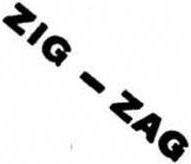
Van Doesburg had other activities apart from painting and promoting De Stijl: he made efforts in architecture, designing houses for artists, together with Sophie Taeuber-Arp and Hans Arp he designed the decoration for the Aubette entertainment complex in Strasbourg. Together with El Lissitzky and Kurt Schwitters, Van Doesburg pioneered the efforts to an International of Arts in two congresses held in Düsseldorf and Weimar, in 1922. A geometrically constructed alphabet Van Doesburg designed in 1919 has been revived in digital form as Architype Van Doesburg. This typeface anticipates similar later experimentation by Kurt Schwitters in his typeface Architype Schwitters. In the mid-1920s, Van Doesburg worked together with Schwitters and the artist Kate Steinitz to produce a series of children's fairy-tale books that featured unusual typography, including Hahnepeter (Peter the Rooster, 1924), Die Märchen vom Paradies (The Fairy Tales of Paradise, 1924–25), and Die Scheuche (The Scarecrow, 1925).
Van Doesburg also kept a link with Dada, publishing the magazine Mécano under the heteronym of I. K. Bonset (possibly derived from "Ik ben zot", Dutch for "I am foolish"). He also published Dada poetry under the same name in De Stijl. Under a second pseudonym, Aldo Camini, he published anti-philosophical prose, inspired by the Italian representative of Metaphysical art, Carlo Carrà. In these works of literature, he heavily opposed individualism (and thus against the movement of the Tachtigers, realism, and psychological thinking). He sought for a collective experience of reality. His conception of intensity had much in common with Paul van Ostaijen's conception of dynamiek. He wanted to strip words of their former meaning, and give them a new meaning and power of expression. By doing this, he tried to evoke a new reality, instead of describing it.
Last years
Van Doesburg stayed active in art groups and the magazine Cercle et Carré, which he left in 1929. "The plan to produce a magazine had been broached some time before. It is clear from the correspondence that in the spring of 1928 Van Doesburg made the first designs for the layout of the periodical. He wrote to Joaquín Torres-García on 28 May 1929 : I will prepare the blueprint fo nouveau plan." Art Concret, which he co-founded in 1929, and Abstraction-Création, which he co-founded in 1931. At the end of February 1931 he was forced to move to Davos in Switzerland because of his declining health. Van Doesburg did not recuperate: on 7 March 1931, he died of a heart attack. After his death Nelly van Doesburg released the last issue of De Stijl in January 1932, as a memorial issue, with contributions by old and new members from De Stijl.
Influence
Van Doesburg's work has had significant influence, including that dealing with issues of crossover art, design and architecture. For example, his Space-time construction #3 (1923) was a key work in the Miller Company Collection of Abstract Art's Painting toward architecture exhibition (1947–52, 28 venues). From that time, the work was influential to the practice of noted architect Harry Seidler. In 1992, he acquired the artwork, which was donated to the National Gallery of Australia in Canberra in 2010. In a travelling, international exhibition on Seidler's work, Van Doesburg's Space time-construction #3 was shown as a key influence.
Works and publications
Publications
- van Doesburg, Theo (9 November 1912). "Futurisme" [Futurism]. Eenheid. 3 (127): 1–6. Retrieved 11 December 2024.
- van Doesburg, Theo (1916). The New Movement in Painting [De nieuwe beweging in de schilderkunst] (in English and Dutch). Vol. 12. De Beweging.
- van Doesburg, Theo (1917). "De Stijl". De Stijl. 1-8 (1917-1932).
- van Doesburg, Theo (1919). Three Presentations On The New Visual Arts [Drie voordrachten over de nieuwe beeldende kunst verscheen]. Amsterdam.
- van Doesburg, Theo (1919). "Fundamental Concepts of the New Visual Art" [Grondbegrippen Der Nieuwe Beeldende Kunst]. Tijdschrift voor Wijsbegeerte. 13: 30–49, 169–188. Retrieved 28 August 2024.
- van Doesburg, Theo (April 1923). "Anti-Tendenkunst" [Anti-Tendencious Art]. De Stijl. 6 (2): 17–19.
- van Doesburg, Theo (1925). Principles Of Neo-plastic Art [Grundbefriffe der neuen gestaltenden Kunst]. Lars Müller.
- van Doesburg, Theo (1929). "Der Kampf um den Neuen Stil" [The Struggle for the New Style]. Neue Schweizer Rundschau. 1929 (1, 3, 5, 7, 8).
Works
-
 Woman in Landscape
Woman in Landscape
-
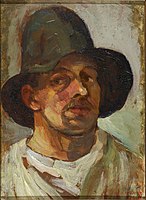 Self-portrait with hat, 1906
Self-portrait with hat, 1906
-
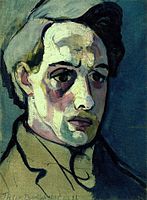 Self-portrait (1915)
Self-portrait (1915)
-
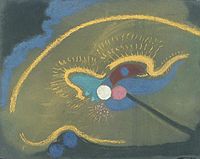 Composition, 1915
Composition, 1915
-
 Composition I
Composition I
-
 Neo-Plasticism: Composition VII (the three graces), 1917
Neo-Plasticism: Composition VII (the three graces), 1917
-
 Counter composition XIII, 1929
Counter composition XIII, 1929
-
 Card players, 1916–1917
Card players, 1916–1917
-
Composition with window with coloured glass III
-
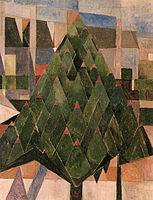 Tree
Tree
-
 Abstract portrait
Abstract portrait
-
 Mouvement héroïque
Mouvement héroïque
-
 Composition IX
Composition IX
-
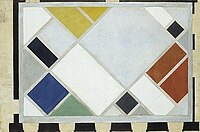 ceiling design for the Ciné-Dancing of the Aubette
ceiling design for the Ciné-Dancing of the Aubette
See also
References
- "De Stijl". Tate Glossary. The Tate. Retrieved 31 July 2006.
- Curl, James Stevens (2006). A Dictionary of Architecture and Landscape Architecture (Second ed.). Oxford University Press. ISBN 0-19-860678-8.
- ^ Baljeu, Joost (1974). Theo Van Doesburg. Studio Vista.
- van Doesburg, Nelly. "Avant-Garde Art". LTM Recordings. Retrieved 4 July 2024.
- Kandinsky, Wassily. "Kandinsly - Complete Writings on Art: Reminiscences". Internet Archive. G. K. Hall & Co. Retrieved 5 July 2024.
- Doig, Allan (2009). "Theo van Doesburg (Christian Emil Marie Küpper)". MoMA – The Collection. Museum of Modern Art. Retrieved 4 February 2011.
- "De Stijl". Guggenheim Glossary. Guggenheim Museum. Archived from the original on 21 August 2008. Retrieved 4 February 2011.
- Magdalena Droste; Bauhaus-Archive (1 November 2002). The Bauhaus, 1919–1933. Taschen. p. 58. ISBN 3-8228-2105-5.
- Fiell, Charlotte; Fiell, Peter (2005). Design of the 20th Century (25th anniversary ed.). Köln: Taschen. p. 706. ISBN 9783822840788. OCLC 809539744.
- Mawer, Simon (23 January 2010). "Theo van Doesburg: Forgotten artist of the avant garde". The Guardian. Retrieved 4 February 2011.
- Kurt Schwitters; Irvine Peacock; Jack Zipes (2009). Lucky Hans and Other Merz Fairy Tales. Princeton University Press. pp. 14–15. ISBN 978-0-691-13967-8. Retrieved 6 September 2013.
- Lipschutz-Villa, Eduardo (1991). The antagonistic link; Joaquín Torres-García Theo van Doesburg. Amsterdam: Institute of Contemporary Art/Amsterdam. ISBN 9080096814.
- "Gruppe Abstraction-Création". Dictionary. Ketterer Kunst. Retrieved 4 February 2011.
- Preece, R. J. (18 June 2018). Theo van Doesburg’s Space-time construction #3 and Composition XX in Painting toward architecture (1947–52). artdesigncafe. Retrieved 24 March 2019.
- Theo van Doesburg.Space-time construction #3, (1923). National Gallery of Australia, Canberra. Retrieved 24 March 2019.
- (c. 2014–15). When art meets architecture. Sydney Living Museums website. Retrieved 24 March 2019.
Further reading
- Baljeu, Joost (1974). Theo van Doesburg. London: Studio Vista. ISBN 0-289-70358-1.
- Hijma, Bouwe (1991). Theo van Doesburg Archive: Archive of Theo van Doesburg and his wives (PDF). The Hague.
{{cite book}}: CS1 maint: location missing publisher (link)
- Jaffé, H.L.C. (1956). De Stijl 1917–1931 – The Dutch Contribution to Modern Art (PDF). Amsterdam: J.M. Meulenhoff.
- Hoek, Els; Blokhuis, Marleen; Goovaerts, Ingrid; Kamphuys, Natalie; et al. (2000). Theo van Doesburg: Oeuvre Catalogus. Utrecht: Centraal Museum. ISBN 90-6868-255-5.
- Overy, Paul (1969). De Stijl. Studio Vista. SBN 289-79622-9.
- Overy, Paul (1991). De Stijl. London: Thames and Hudson. ISBN 0-500-20240-0.
- White, Michael (2003). De Stijl and Dutch modernism. Manchester University Press. ISBN 0-7190-6162-8.
- Faassen, Sjoerd; Renders, Hans (2022). Ik sta helemaal alleen. Theo van Doesburg 1883-1931 [I stand completely alone. Theo van Doesburg 1883-1931]. Amsterdam: De Bezige Bij. ISBN 9789403134314.
External links
- Scans of the De Stijl issue with Van Doesburg's Letterklankbeelden
- Collection Rijksmuseum
- Several original writings and articles by Theo van Doesburg
